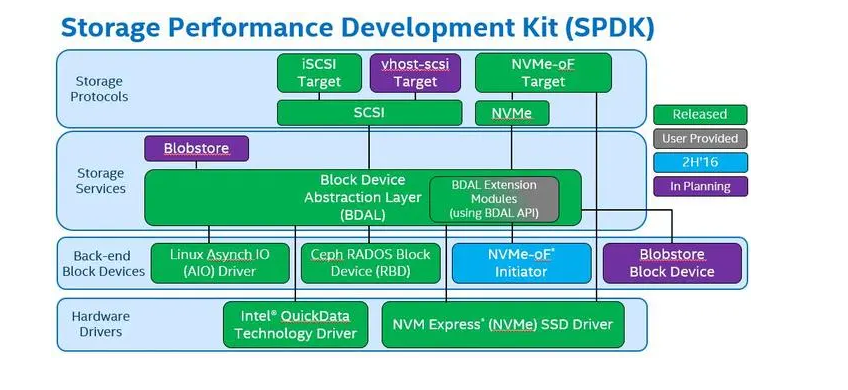下面是一个简单的DPDK程序示例,用于填充UDP包头:
#include <stdio.h>
#include <string.h>
#include <stdint.h>
#include <rte_eal.h>
#include <rte_ethdev.h>
#include <rte_mbuf.h>
#define RX_RING_SIZE 1024
#define TX_RING_SIZE 1024
#define NUM_MBUFS 8191
#define MBUF_CACHE_SIZE 250
#define BURST_SIZE 32
static const struct rte_eth_conf port_conf_default = {
.rxmode = { .max_rx_pkt_len = ETHER_MAX_LEN }
};
int main(int argc, char **argv) {
int ret;
uint16_t nb_ports;
uint16_t portid;
// 初始化 DPDK 环境
ret = rte_eal_init(argc, argv);
if (ret < 0)
rte_exit(EXIT_FAILURE, "Error with EAL initialization\n");
nb_ports = rte_eth_dev_count_avail();
// 配置每个网卡端口
for (portid = 0; portid < nb_ports; portid++) {
struct rte_eth_dev_info dev_info;
struct rte_eth_txconf txconf;
uint16_t q;
memset(&dev_info, 0, sizeof(dev_info));
rte_eth_dev_info_get(portid, &dev_info);
if (dev_info.tx_offload_capa & DEV_TX_OFFLOAD_UDP_CKSUM) {
printf("Port %u supports UDP checksum offload\n", portid);
} else {
printf("Port %u does not support UDP checksum offload\n", portid);
}
txconf = dev_info.default_txconf;
txconf.offloads |= DEV_TX_OFFLOAD_UDP_CKSUM;
// 配置网卡队列
for (q = 0; q < dev_info.nb_tx_queues; q++) {
ret = rte_eth_tx_queue_setup(portid, q, TX_RING_SIZE,
rte_eth_dev_socket_id(portid),
&txconf);
if (ret < 0)
rte_exit(EXIT_FAILURE, "Error configuring TX queue %u "
"for port %u\n", q, portid);
}
// 启动网卡端口
ret = rte_eth_dev_start(portid);
if (ret < 0)
rte_exit(EXIT_FAILURE, "Error starting port %u\n", portid);
// 开启混杂模式
rte_eth_promiscuous_enable(portid);
}
struct rte_mempool *mbuf_pool;
mbuf_pool = rte_pktmbuf_pool_create("MBUF_POOL", NUM_MBUFS,
MBUF_CACHE_SIZE, 0,
RTE_MBUF_DEFAULT_BUF_SIZE,
rte_socket_id());
if (mbuf_pool == NULL)
rte_exit(EXIT_FAILURE, "Cannot create mbuf pool\n");
struct rte_mbuf *packet[BURST_SIZE];
uint16_t nb_rx;
while(1) {
// 接收数据包
for (portid = 0; portid < nb_ports; portid++) {
nb_rx = rte_eth_rx_burst(portid, 0, packet, BURST_SIZE);
for (int i = 0; i < nb_rx; i++) {
struct ether_hdr *eth_hdr;
struct ipv4_hdr *ip_hdr;
struct udp_hdr *udp_hdr;
eth_hdr = rte_pktmbuf_mtod(packet[i], struct ether_hdr *);
ip_hdr = (struct ipv4_hdr *)((char *)eth_hdr + sizeof(struct ether_hdr));
udp_hdr = (struct udp_hdr *)((char *)ip_hdr + sizeof(struct ipv4_hdr));
// 填充UDP头
udp_hdr->dgram_cksum = 0;
udp_hdr->dgram_cksum = rte_ipv4_udptcp_cksum(ip_hdr, udp_hdr);
// 发送数据包
uint16_t nb_tx = rte_eth_tx_burst(portid, 0, packet, nb_rx);
}
}
}
return 0;
}
上述示例程序中,我们首先初始化DPDK环境,然后配置每个网卡端口的发送队列以支持UDP校验和计算。接着,我们创建一个rte_mempool对象用于存储数据包缓冲区,并通过调用rte_pktmbuf_pool_create函数来实现该对象。在主循环中,我们使用rte_eth_rx_burst函数接收网络数据包,并提取出其中的UDP头部信息。然后,我们使用rte_ipv4_udptcp_cksum函数填充UDP头部,并调用rte_eth_tx_burst函数将数据包发送到相应的网卡端口。





















